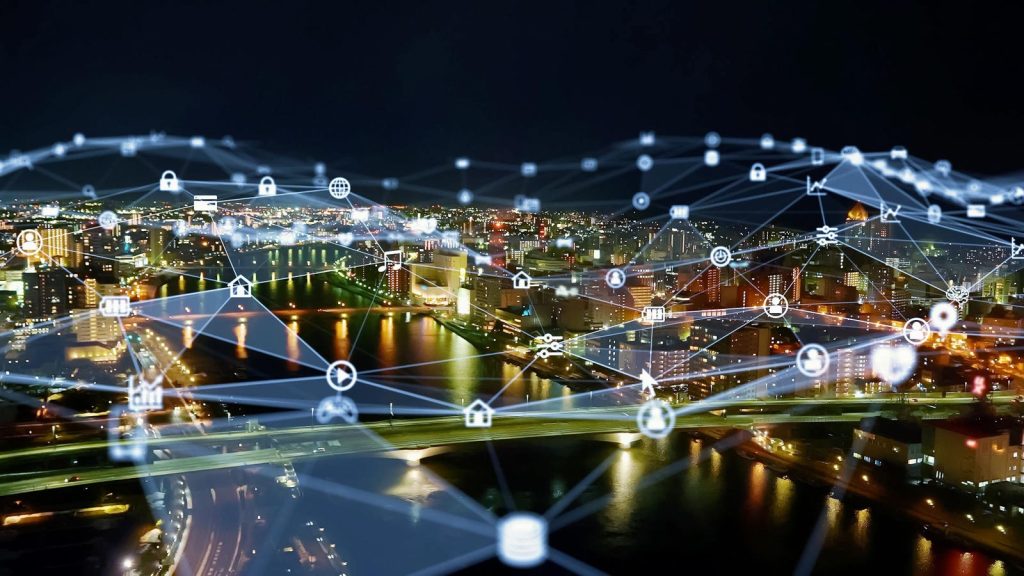Realizing the potential of Smart Cities will require public-private cooperation and security by design.
The idea of smart cities is starting to take shape as the digital era develops. A city that has developed a public-private infrastructure to support waste management, energy, transportation, water resources, smart building technology, sustainability, security operations and citizen services is referred to as a “smart city”. Realizing the potential of Smart Cities will require public-private cooperation and security by design.
A smart city functions as an applied innovation lab. Automation, robotics, enabling nanotechnologies, artificial intelligence (human/computer interface), printed electronics and photovoltaics, wearables (flexible electronics), and information technologies like real-time and predictive analytics, super-computing, 5G wireless networks, secure cloud computing, mobile devices, and virtualization are a few of the fascinating technological trends of the digital era that are influencing the development of smart cities.
Cities have become “smarter” overall as a result of the shift from analog to digital technologies in recent years. Such cooperation entails facilitating coordinated operational actions. It includes exchanging situational awareness as well.
Smart cities save costs and resource consumption, increase public participation, and improve the effectiveness and efficiency of municipal services through the use of digital technology for information and communication. These types of digital technologies are utilized by smart cities to facilitate information and communication, reduce expenses and resource consumption, enhance public participation, and improve the efficacy and efficiency of municipal services.
Artificial intelligence (AI) and machine learning (ML) are already impacting the design and operations of Smart Cities. One of the areas that AI and ML can support is facilitating architectural designs and building for optimum ergonomics and performance. Also, AI and ML can facilitate Security Orchestration Automation and Response (SOAR) products by integrating orchestration processes, automation, incident management and collaboration, visualization, and reporting under a single interface.
A smart city is made up of many different verticals, technologies, and regulatory constraints that present a variety of interactions and obstacles. A private-public partnership is needed to design and construct a “Secure Smart City,” integrating personnel, regulations, procedures, environmental sustainability, and technology from the public and private domains throughout the whole planning phase.
Waste management, energy, smart building technology, health, transportation, waste management, and security services are all included in smart cities. The firm Frost & Sullivan estimates the worldwide market potential for smart city categories like transportation, healthcare, building, infrastructure, energy, and governance to reach $2.46 5 trillion by 2025. Smart Cities to Create Business Opportunities Worth $2.46 Trillion by 2025 (frost.com)
While the public sector is in charge, the private sector owns the majority of the vital urban infrastructure. A Secure Smart City can only truly thrive under the auspices of a public/private partnership because of that ownership component (infrastructure, energy, agriculture, construction, healthcare, transit, and government). Public/private partnerships are critical to the success of Smarty City operations that provide essential services and benefits. Such partnerships can help agencies reduce costs, simplify operations, and are easily scalable at times of increased and decreased need.
The Smart City Security Components
For a Smart City to effectively undertake operations related to citizen security and protection, security is also a crucial component. The increasing complexity and range of risks make cooperation between public and private sectors more crucial than ever. It seems logical to increase public-private sector collaborations to counteract cyber and physical threats to vital infrastructure.
Maintaining the security of a smart city is a significant task because the urban safety ecology of its citizens may be affected by a variety of events and dangers, such as criminal activity, terrorism, weather-related catastrophes, and natural disasters. Urban smart technologies are emerging as a result of our cities’ increasing complexity and Internet of Things connectivity. Regretfully, the dangers are evolving and expanding too. A city must be more than just connected, and easily accessible. The concept of the “Secure Smart City” is rapidly changing, and security is essential. To create and protect, strong public-private partnerships are required.
Please also see my article: 4 Evolving Technology Areas Of Smart Cybersecurity (forbes.com)
Components of a Safe City
Governmental and private infrastructure must be established in order to carry out operations and supply technology that secures and protects residents in order to maintain a city safe and secure.
This comprises: 1) Mutual communications, situational awareness, and intelligence exchange.
2) Coordinated operations management tasks to avoid, reduce, address, and resolve problems
3) the acquisition of numerous technologies to improve cybersecurity and physical security. Sensors, scanners, obstacles, intelligence, biometrics, audio and video surveillance, and data analytics are examples of technologies.
Protocols between the public and private sectors are crucial for planning and accountability in the construction of a safe and secure city. Situational awareness is built on appropriate communication and information exchange. First responders, law enforcement, and public and political leaders need to work together, train together, and be able to communicate in order to recognize and respond to the always evolving dangers.
Being able to stay up with the threats’ growing sophistication is another extremely challenging task. This is a difficult endeavor that calls for incident mapping in advance. This mapping entails the use of horizon network monitoring and diagnostics, predictive analytics, and well-informed risk management planning. In the modern digital age, a large portion of planning can be automated through the use of big data, artificial intelligence, and algorithms. Case management, situational awareness, and mitigation are just a few of the exciting ways that the government is integrating data analytics into homeland security initiatives. However, human monitoring is always necessary because everything is prone to error.
All of these technologies have applications related to security in smart cities, even though their primary goal is to facilitate citizen services. The dispersal of explosives by robotics and the detection of CBRNE threats by mobile chemical and biological sensors both improve public safety. Surveillance cameras and other embedded security systems and sensors can be used to monitor criminal activity and terrorist threats.
The exponential transformation of our civilization by emerging technological growth has ushered in a new renaissance. Smart Cities are an inevitable outcome of this transformation and public/private partnerships and the right security by design are key elements that will allow them to flourish.
Read the full article here






